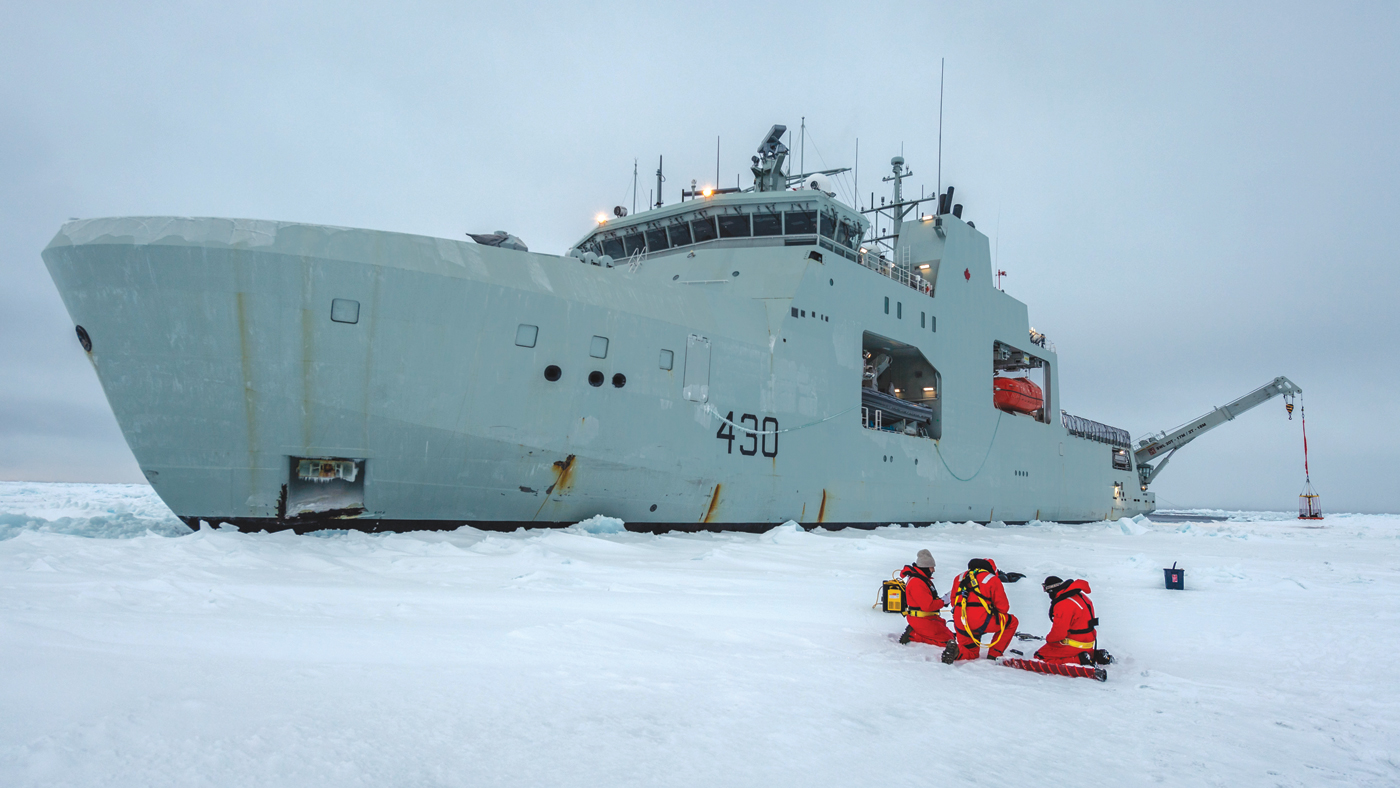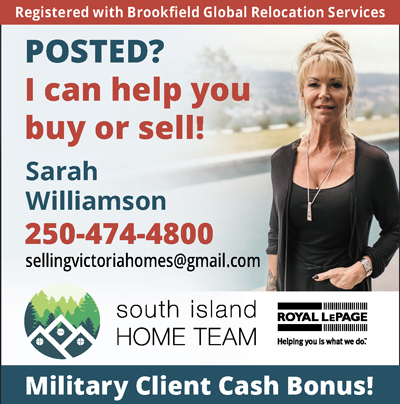Circumnavigating with a Naval Communicator aboard HMCS Harry DeWolf
By Lookout on Jan 13, 2022 with Comments 0

Civilian contractors and crew members conduct ice operations alongside HMCS Harry Dewolf during Cold Weather Trials near Frobisher Bay on Feb 20. Photo by Corporal David Veldman, Canadian Armed Forces Photo
Master Sailor River Leggat
HMCS Harry DeWolf
––
Sailing as a profession is a paradoxical career. On one hand we all love to travel, but on the other hand we all can’t wait to get home.
Sailing the circumnavigation of North America in HMCS Harry DeWolf was a wholly different experience – thrilling and unique with vast views.
As a Naval Communicator, more specifically the Information Systems Administrator, I am the one that either steals your bandwidth or resets your passwords.
I’ve been with the ship since the shore office was barely assembled with a handful of folks, through to breaking ice for the first time and now through spinning a yarn around North America. Circumnavigation was our watchword throughout the beginning of the shore office days, and all eyes were fixed on it.
Going through the north was an amazing experience. The scenery and raw nature around us as we sailed from hamlet to hamlet was awe-inspiring. The sights of fleeting glaciers and wildlife such as walruses and polar bears were frequent reminders of our changing world and how nature tries its best to adapt to it.
We visited Beechey Island and saw the final resting place of a handful of sailors from the Franklin Expedition. Their graves stood in mute testament to the severities of sailing through dangerous waters. We even had a close encounter with a polar bear, with whom we had a quiet (and somewhat rushed) farewell, before we respected their space and made our way back down the mountain to safety.
We visited many hamlets and heard the residents’ stories, listening intently and learning where we could. We saw their way of life and how they adapt to the world around them.
We worked with the Canadian Rangers as we made our way through the waters, frequently talking to them on the radio as they patrolled the region. I will never forget when they came on board and I got to speak to one of them about their experiences. They showed me pictures of their hunts, what their region looks like in the grips of winter, and talked to me about their life in the north. It was a unique exchange I hope to have again should I ever have the opportunity.
During the course of our travel, we kept Satellite Communications up almost the entire time. At Grise Fjord, Harry DeWolf and the communications team maintained connectivity when the antenna had an elevation of less than five degrees – something that would not be possible on a Canadian Patrol Frigate or Maritime Coastal Defence Vessel.
Once we got through the Northwest Passage, we, as East Coast sailors, were treated to yet another unique experience – having a port visit in British Columbia. Sailing into the port where I did my QL3 course many years ago aboard my current East Coast ship was something new and extremely cool. In Esquimalt, we made the final touches on our network setup to prepare us for Operation Caribbe, and before we knew it, after a whirlwind rest and maintenance period, we headed south on Mission Specific Readiness Trials.
Operation Caribbe is a unique deployment. It is extremely busy when it’s busy, and patrol periods in-between interdictions really change the tempo. These missions test our professionalism to ensure our skills stay sharp even while we are waiting and patrolling. Our crew came together every time the occasion called for it, and did some outstanding work to make some spectacular drug busts happen.
We also had the opportunity to see sea turtles, dolphins, a few whales and lots of birds. This deployment also represented the furthest south I’ve ever gone; this means that in one sail I have reached as north as I’ve ever gone and as south as I’ve ever gone in the world.
As sails go, this one has been hands down, no holds barred, the coolest one I’ve done. I’ve seen more, done more, and achieved things I would never have been able to do on another class of ship. I managed to be the first Master Sailor posted to an Arctic Offshore Patrol Vessel to get their Senior Watch Keeper qualification. I troubleshot, repaired, and worked with an entirely new network and passed on knowledge where I could. I got to be on the ship that is now the 17th ship to ever circumnavigate North America, and the second Royal Canadian Navy ship to do it.
I don’t say these things just to brag, but to point out that new experiences are always around the corner. On these ships you have an opportunity to be the change you want to see, to fix the problems as best you can with what resources you have, and to make your mark on the future fleet.
All of these things may change, but one thing will always be the same: No matter where you go, the best port visit is home.
––––
Filed Under: Top Stories
About the Author:





